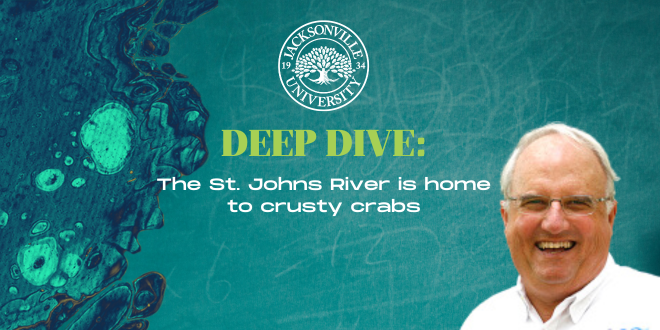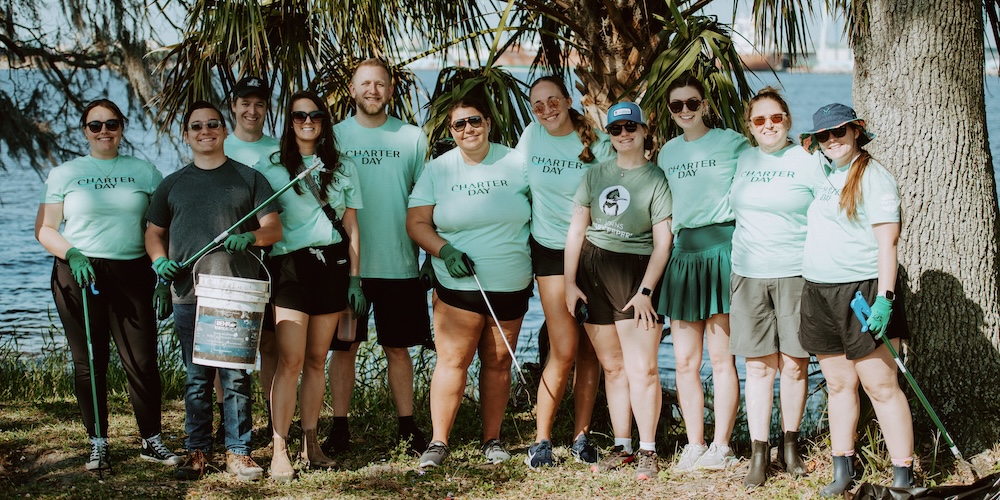The St. Johns River is a crabby kind of place, meaning that there are a number of crab species other than the popular and personal favorite, the blue crab, present in the river. Most of them are small and often overlooked. Some, like the larger stone crabs are in the river but not in sufficient quantities to make them a commercially viable fishery. While some stone crabs are harvested locally, they are a relatively small quantity when compared to the Florida Gulf Coast and South Florida landings.
Stone crabs have limited suitable habitat in the river. They require higher salinity typically found only north and east of the Napoleon Bonaparte Broward Bridge, otherwise known as the Dames Point Bridge. Decades of dredging and modification of the surrounding salt marsh has taken its toll. There have been a few annual spikes in stone crab claws harvested as a result of drought years that had caused the salinity in the river to increase further upstream. Stone crabs are unusual in that only the claw is removed, and the crab is released alive. They will often grow a new claw when they molt.
The most numerous crabs in the St Johns River are fiddler crabs. These popular fishing baits are found in a wide range of salinities and temperature ranges. So, while they look similar, there are several different species of fiddler crabs depending on the location and habitat.
Biologically, a species is defined as a group of organisms that can reproduce with each other and produce fertile offspring. Species are the most basic unit of classification in the scientific taxonomic system, which organizes living things into categories based on their biological characteristics. In fact, species is the only real way to identify creatures. All other levels of taxonomy are created by scientists and subject to change. The genus name for fiddler crab is Uca, which came from the native American word for the fiddler crab.
Fiddler crabs get their common name because the males have one claw that is much larger than the other. Females have two smaller, equal sized claws. The males use their claws for defense and to attract females. Fiddler crabs can be left-handed or right-handed and in most species the difference is 50/50. But there are some species that are almost always either left- or right-handed.
Fiddler crabs are extremely important to salt march ecology. Each crab digs a tubular burrow in the intertidal zone. The burrows are an important way to get oxygen and nutrients into the sediment. These holes can be simple or multi-chambered, or they can be shallow or extend down almost 2 feet. The crabs will enter their burrow as the tide rises and wait until the tide falls to exit. Males will stand near their burrow and wave their claw to attract a female mate. Each species has its own distinctive waving pattern, and the pace will quicken as a female approaches. Scientists refer to these intertidal mud flats as the Parade Grounds when there are hundreds of male fiddler crabs waving as the females approach.
Sometimes, especially during hurricanes or other high tide events, fiddlers will leave the confines of the intertidal zone and move into the salt marsh or higher ground. This is not an issue unless you happen to have a home with a garage or pool in the vicinity. Then you get invaded. If that happens, the best thing to do is gently sweep them out and try to limit their access to return. They are harmless and eat detritus or decaying plant material. So, no need to be afraid of them.
Other species of crabs include the dime-sized mud crabs that look like miniature stone crabs and live within oyster beds. Also found in oysters are the tiny, soft and pale pea crabs that live inside the oyster and are considered a delicacy to be eaten and enjoyed along with the oyster.
Another species is the square-backed crab that occupies the salt marsh at a slightly higher elevation than fiddler crab. They look similar to fiddler crabs but as the name implies have a square carapace. Their claws are small and the same size. They too can invade nearby neighborhoods.
Last, but not least, are hermit crabs that live just below the water level and move up and down with the tide. Hermit crabs have an incredibly soft and fragile abdomen that they protect by carrying around an old snail shell. The shell must be a good match in size and weight for each hermit. The crabs change shells frequently, always looking for the perfect fit.
Those are just some of the crabs that live in the St. Johns River. After all, it is a very crabby place. But we love it.
Glad you asked River Life:
Now that retirement is just around the corner, what are your plans?
One of the many benefits that I have enjoyed as a professor has been traveling with students to learn and study other environments, often abroad. I hope to continue to travel and explore other counties. My wife and I recently visited Panama (highly recommended) to see the canal, as well as the rain forest and Tanzania (also highly recommended) which was like being in the middle of a nature documentary. And I’ll continue writing River Life. After all, there’s a whole lot of life in the river left to describe.



